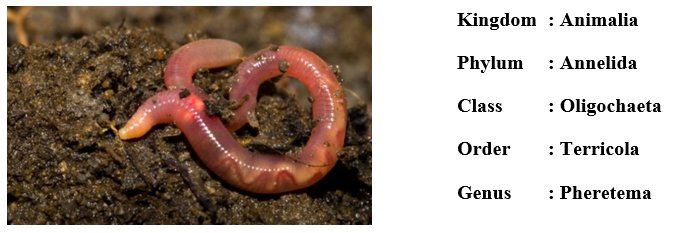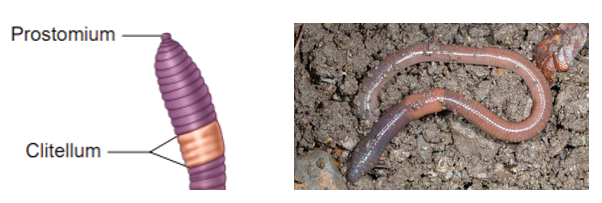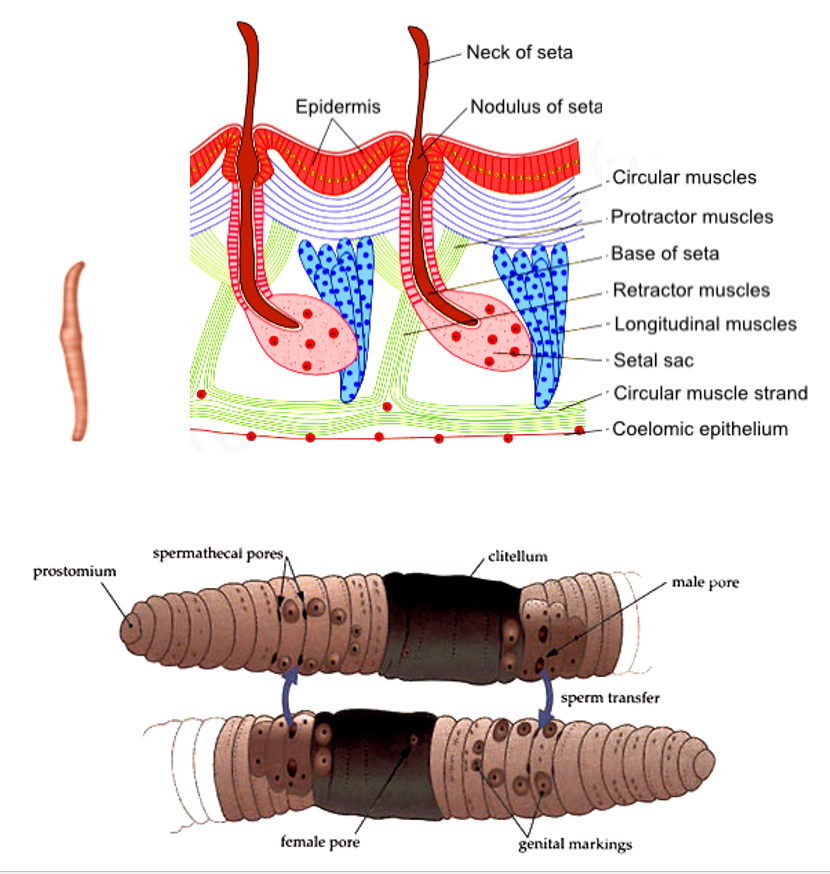Earthworm is a reddish brown terrestrial invertebrate. They are commonly known as ‘Friends of Farmers’ since they increases the fertility of soil. The most common Indian earthworms are Lampito mauritii (Syn. Megascolex mauritii), Perioynx excavatus and Metaphire posthuma (Syn. Pheretima posthuma).

Habitat
- It usually occupies the upper moist layers of soil which is rich in decaying organic matter.
- They are nocturnal organisms.
- During daytime, they make burrows by boring and swallowing soil, and live in it.
External Appearance
- Earthworms have long (nearly 12 – 20 cm) and cylindrical body.
- The body is bilaterally symmetrical and slimy in touch.
- The dorsal body is dark brown in color and has a dark median mid-dorsal line, along the longitudinal axis.
- The ventral surface is light brown in color.
Segmentation
- The body is metamerically segmented into ring like segments (100 – 200 in number) known as metameres.
- The segments are separated internally by septa, and externally by grooves.
- The first segment is called peristomium (buccal segment). It surrounds the mouth.
- A fleshy lobe called prostomium covers the mouth.

Clitellum
- In a mature worm, segments 14 – 16 are thickened, and they are covered by a dark band of glandular tissue called clitellum.
- Due to the clitellum, the body is divided into 3 parts :
- Pre-clitellar region
- Clitellar region
- Post-clitellar region
- Clitellum forms the cocoon during breeding season.
Setae
- Each body segment (except the first, last and the clitellum) bears S – shaped chitinous projections from the body wall called setae or chetae.
- The setae help in the locomotion of earthworms.
- They can be extended or refracted with the help of muscles.
Locomotion
- Locomotion is carried out by the help of setae, muscles attached to the setal sacs (protractor and refractor muscles) and with the periodical contractions of the muscles (circular and longitudinal muscles) of the body wall.
- Setae provide a firm grip on the substratum.

Body openings
- Mouth: Found on the ventral surface of peristomium.
- Spermathecal openings: 4 pairs of spermathecal openings are found ventro – laterally in the inter-segmental grooves of segments 5- 9.
- Genital aperture: A single female genital aperture called oviducal aperture is found on the mid ventral line of 14nth segment. A pair of male genital pores is found on the ventral side of the 18nth segment. Two pairs of genital papillae are found close to the male genital pores.
- Nephridiophores: These are minute pores found meant for the discharge of nitrogeneous wastes. They are found in all segments, except the first two.
- Anus: Anal opening is found at the terminal end of the last segment.